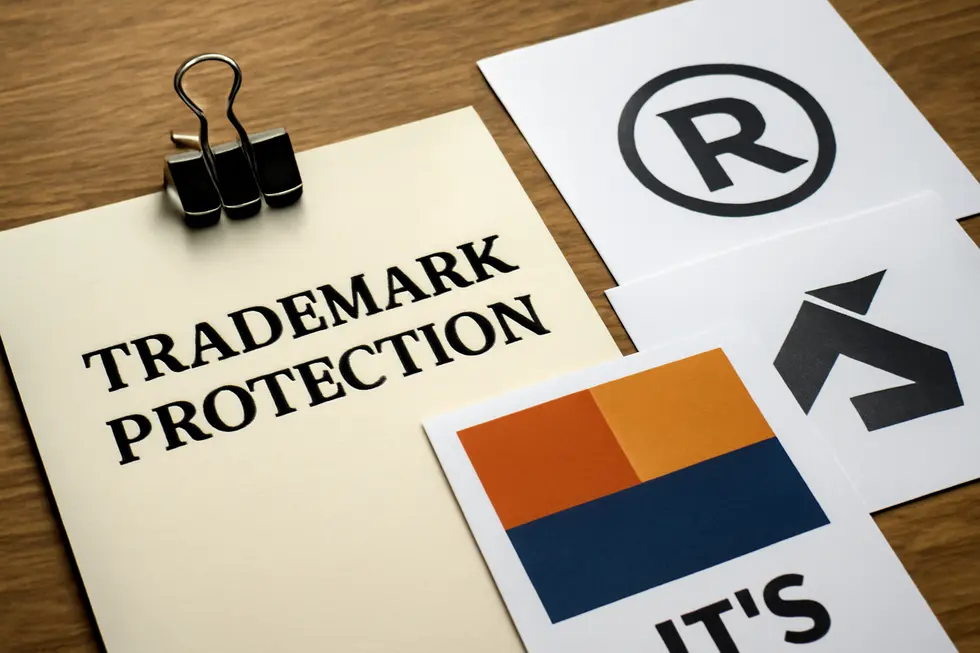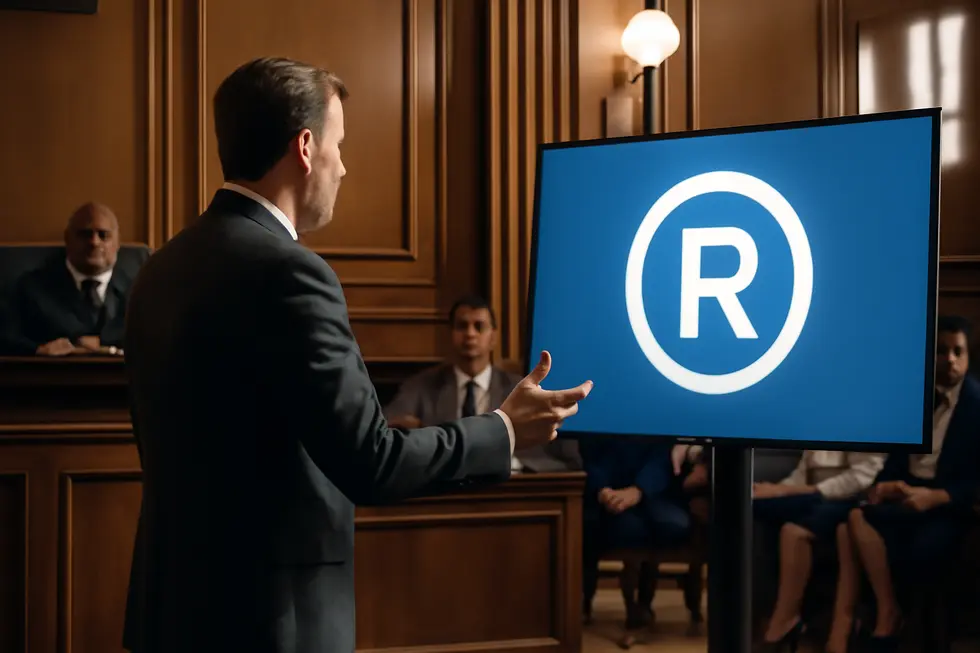Introduction
Trademark law is a crucial yet often misunderstood aspect of protecting your business’s identity in the marketplace. It governs how distinctive signs such as names, logos, and slogans are legally secured to distinguish your goods or services from others. For business owners, comprehending trademark law is not just about registering a mark; it’s about safeguarding your brand’s reputation and consumer trust. This exploration begins with defining the scope of trademark law and moves through the core protections it offers. We then detail the registration process and ongoing formalities, before diving into how these rights are enforced and the remedies available against infringement. Finally, we analyze how trademark law impacts the broader economy and consumers, ultimately reinforcing why securing your trademark is foundational to long-term business success.
Tables of Contents
Chapter 1: Definition and Scope of Trademark Law
- Expanding Trademark Law in the Digital Era: Safeguarding Online Identities and Virtual Assets
- The Economic Impact of Trademark Law: Enhancing Brand Equity, Competition, and Consumer Confidence
- Navigating Societal Values and Global Complexities: The Regulatory Landscape and Enforcement Challenges in Trademark Law
Chapter 2: Fundamental Elements and Protections Defined by Trademark Law
- The Crucial Role of Distinctiveness in Trademark Protection and Enforcement
- Navigating Legal Rights and Enforcement Tools That Safeguard Trademarks
- Expanded Legal Safeguards for Famous Trademarks: Preserving Distinctiveness and Reputation
Chapter 3: Registration and Formalities in Defining Trademark Law: Ensuring Legal Protection Through Structured Processes
- Navigating Trademark Application and Examination: Key Steps to Securing Exclusive Rights
- Securing Ownership and Legal Authority: The Impact of Trademark Registration Formalities
- Sustaining Trademark Rights: Registration, Renewal, and Enforcement Essentials
Chapter 4: Enforcement and Remedies in Trademark Law
- Strategic Enforcement Approaches for Defending Trademark Rights
- Comprehensive Legal Remedies and Judicial Relief in Trademark Enforcement
- Navigating Cross-Border Complexities: Jurisdictional Challenges in International Trademark Enforcement
Chapter 5: Economic and Consumer Impact of Defining Trademark Law
- How Trademark Law Drives Economic Incentives and Enhances Market Efficiency
- How Trademark Law Builds Consumer Trust and Safeguards Economic Integrity
- Tracing the Legal Roots: How U.S. Trademark Foundations Shape Economic Outcomes and Consumer Confidence
Chapter 1: Definition and Scope of Trademark Law

1. Expanding Trademark Law in the Digital Era: Safeguarding Online Identities and Virtual Assets
The rapid integration of technology into commerce has significantly reshaped trademark law, broadening its scope to protect digital identifiers and online presences. Traditionally, trademarks safeguarded tangible marks like logos or slogans that distinguish physical goods or services. Today, this protection extends to domain names, social media handles, and digital logos that serve as essential markers of brand identity in global online markets. The internet’s global reach transcends local jurisdictional boundaries, allowing trademarks to be visible and relevant worldwide, which complicates enforcement but also encourages the use of sophisticated technological tools like AI for monitoring unauthorized use.
Artificial intelligence plays a crucial role in detecting violations by scanning websites, ads, and social media posts in real time. This proactive enforcement helps combat infringement and counterfeit digital goods more efficiently across multiple platforms. Furthermore, emerging virtual environments, including the metaverse, present novel challenges where branded virtual products require trademark protection to maintain brand integrity and prevent unauthorized replication.
Modern trademark practices benefit from advanced search technologies such as phonetic and image recognition, which improve the accuracy and speed of trademark clearance and registration. Electronic filing systems and AI-assisted analytics streamline the application process and support ongoing monitoring, ensuring trademarks remain robust assets in the evolving digital landscape. Recognizing digital brand elements as critical intellectual property reflects trademark law’s adaptation to contemporary business realities, securing consumer trust and brand reputation in a highly interconnected environment.
For further insights on protecting online identifiers under trademark law, visit Trademark2Go on common law trademark rights.
2. The Economic Impact of Trademark Law: Enhancing Brand Equity, Competition, and Consumer Confidence
Trademark law profoundly shapes the economic landscape by protecting and enhancing intangible business assets that underpin market dynamics. At its core, trademarks evolve from simple identifiers into powerful symbols of brand equity, which significantly contribute to a company’s market value and long-term financial success. This value grows as trademarks gain recognition and trust, requiring diligent management such as renewal, enforcement against infringers, and strategic licensing to unlock full commercial potential. Notably, trademarks can serve as collateral for financing, underscoring their economic importance beyond mere legal protections.
In competitive markets, trademark law prevents misleading use of marks that could confuse consumers about product origins. Strong trademarks—distinctive either inherently or through extensive use—help businesses secure competitive advantages by safeguarding their reputation and customer loyalty. The law’s focus on the likelihood of confusion balances protection with fair competition, shaping how companies position and defend their market presence.
Consumer trust represents a vital economic function of trademarks. By assuring consistent quality and source, trademarks cultivate brand loyalty and streamline consumer decision-making. Trademark law supports this by prohibiting deceptive practices and requiring quality control from licensees, preserving the mark’s integrity over time. This trust incentivizes businesses to maintain high standards, which benefits both consumers and the broader market.
Thus, trademark law integrates legal safeguards with strategic economic value, reinforcing trademarks as essential assets that drive revenue, fair competition, and consumer confidence.
For a detailed exploration of trademarks as assets in business strategy, visit trademark protection for business names and logos. Further insights can be found at Managing IP regarding economic roles of trademarks.
3. Navigating Societal Values and Global Complexities: The Regulatory Landscape and Enforcement Challenges in Trademark Law
Trademark law serves crucial societal roles by protecting marks that identify goods or services, preventing consumer confusion, and fostering fair market competition. It upholds brand reputation and consumer trust, encouraging consistent quality and guarding against deceptive business practices. These protections reflect public policy goals that balance the interests of consumers, businesses, and society by promoting economic growth and ethical intellectual property use. Cultural values influence how trademark rights are recognized and respected, leading to varied enforcement approaches worldwide.
Geopolitically, the landscape is markedly complex. Trademark laws differ significantly across nations in terms of registration criteria, duration, and procedural requirements. This variation complicates cross-border protection and enforcement, as rights granted in one jurisdiction may not fully extend elsewhere. International agreements strive to harmonize trademark standards but permit national idiosyncrasies, requiring businesses to navigate a patchwork of regulatory regimes.
Regulatory systems range from federally centralized registration, like the USPTO in the U.S., to reliance on common law rights acquired through use. Emerging digital technologies and integrated global commerce challenge these frameworks, which must evolve to address online infringement and changing market realities.
Global enforcement faces hurdles including jurisdictional fragmentation, coordination among countries to combat counterfeiting, and respecting local legal traditions that affect infringement definitions. Online environments further complicate enforcement, given the ease of cross-border misuse. Ultimately, trademark law operates at the nexus of societal expectations and geopolitical diversity, demanding adaptive legal structures that protect both consumers and brands globally.
For more on protecting your business identity, explore trademark protection for business names and logos.
External source: Nick Heimlich Law.
Chapter 2: Fundamental Elements and Protections Defined by Trademark Law

1. The Crucial Role of Distinctiveness in Trademark Protection and Enforcement
Distinctiveness lies at the heart of trademark law, determining whether a mark effectively identifies the source of goods or services and thus qualifies for legal safeguarding. This concept ensures that consumers can confidently recognize a brand, reducing confusion and fostering trust. Trademarks vary in distinctiveness along a spectrum, ranging from highly unique coined terms to generic descriptors incapable of serving as source identifiers.
At the strongest end, fanciful marks are completely invented words with no prior meaning, instantly signaling a single business origin. Slightly less unique but still inherently distinctive are arbitrary marks—common words used in unrelated contexts, which create strong associations over time. Suggestive marks hint indirectly at qualities of the products, requiring consumer interpretation but still offering protection without additional proof. Conversely, descriptive marks directly convey characteristics of goods or services and usually must develop secondary meaning—widespread consumer recognition tied to a particular source—to gain legal protection. Generic terms remain unprotectable as they denote general product categories rather than origin.
This gradation influences federal registration eligibility and the strength of legal enforcement against infringement or dilution. Beyond words, distinctiveness extends to logos, slogans, sounds, colors, and trade dress. Trade dress protection similarly depends on the mark’s ability to uniquely identify a business, preventing competitors from misleading consumers through imitation.
Famous marks illustrate how sustained recognition amplifies protection, enabling brands to resist unauthorized use more robustly. Understanding distinctiveness thus clarifies the key element that empowers trademark law to defend brand identity and preserve consumer confidence effectively.
For deeper insights on protecting business names and logos, explore trademark protection for business name & logo.
Further reading on this subject is available at Wikipedia’s Trademark page.
2. Navigating Legal Rights and Enforcement Tools That Safeguard Trademarks
Trademark law grants owners exclusive legal rights to use their marks in commerce, preventing others from unauthorized use and preserving the brand’s distinct identity. Central to these protections is the registration of trademarks with government authorities like the USPTO, which creates a stronger nationwide legal shield than common law rights alone. Registered marks benefit from clear legal presumptions and robust defenses against infringement and dilution. Ownership also involves controlling the mark’s use to maintain brand integrity. This control extends to online platforms, where trademark owners can employ tools to restrict unauthorized modifications or counterfeit listings, preserving consumer trust and reducing fraud risks.
Maintaining quality control is vital when licensing trademarks; contracts often include stipulations to enforce standards and enable corrective actions if licensees deviate. This ensures the trademark’s reputation remains intact across all uses. Enforcement mechanisms go beyond contracts, involving legal proceedings such as opposition and cancellation during trademark application phases to block confusing or conflicting marks. Litigation serves as a formal means to resolve infringement disputes, with many cases settling before trial through injunctions or agreements. Moreover, digital marketplaces provide enhanced enforcement options, allowing trademark owners to report violations and swiftly remove counterfeit goods.
Contracts within supply chains further mitigate risks by employing indemnification clauses and insurance provisions, which protect against infringement or confidentiality breaches. Together, these interconnected rights and enforcement strategies form a comprehensive legal framework, essential for sustaining brand authenticity and consumer confidence.
For deeper insights into trademark registration and enforcement, consult expert resources like Masterly Legal Solutions and analyses on brand protection tools from specialized legal firms.
3. Expanded Legal Safeguards for Famous Trademarks: Preserving Distinctiveness and Reputation
Famous trademarks receive heightened protections that extend beyond those granted to ordinary marks, reflecting their substantial market presence and consumer recognition. Central to these protections is the prevention of dilution—a legal concept that guards against uses that diminish a famous mark’s distinctiveness or harm its reputation, even in the absence of consumer confusion. Dilution manifests in two principal forms: blurring and tarnishment. Blurring occurs when a mark’s uniqueness is weakened through association with unrelated products or services, while tarnishment involves linking the mark to inferior or objectionable items, potentially damaging public perception.
Unlike typical trademarks confined to particular goods or services, famous marks benefit from protection across different industries and broader geographic scopes. This means that unauthorized use of a renowned mark in entirely unrelated sectors can be challenged to prevent erosion of its identity. Additionally, their protection often crosses territorial boundaries, safeguarding them even in markets they have yet to penetrate. This global reach is reinforced by international agreements such as the Paris Convention and TRIPS, which recognize well-known marks regardless of registration status and compel member countries to provide adequate protection.
Moreover, famous trademarks can protect their trade dress—the overall visual appearance of a product or packaging—provided distinctiveness has been established. Legal frameworks, such as the Lanham Act, empower owners to seek strong remedies including injunctions and enhanced damages against infringement, emphasizing the importance of preserving the mark’s exclusive identity. These robust safeguards ensure famous trademarks maintain their value and the trust they inspire across diverse markets and platforms.
For businesses seeking insight into trademark enforcement and protection strategies, explore detailed guidance at trademark protection for business names and logos.
Reference: Recognition and Practice of Overseas Well-Known Trade Marks
Chapter 3: Registration and Formalities in Defining Trademark Law: Ensuring Legal Protection Through Structured Processes

1. Navigating Trademark Application and Examination: Key Steps to Securing Exclusive Rights
The process of trademark registration serves as a critical gateway to securing exclusive legal rights and preventing unauthorized use. It begins with the submission of a comprehensive application that must clearly identify the mark—whether a word, logo, or slogan—alongside the applicant’s details and a precise description of the goods or services. Classification plays a vital role here, following internationally recognized systems such as the NICE Classification, to categorize the mark correctly within the marketplace.
Before filing, conducting a clearance search is highly advisable. This step helps verify that the trademark does not conflict with existing marks, minimizing the risk of rejection or infringement disputes. Once submitted, the application undergoes a rigorous examination by the trademark office. Examiners evaluate the mark’s distinctiveness, ensure compliance with legal standards, and check for conflicts with prior registrations. If objections arise, an office action notifies the applicant, who must then respond with clarifications or amendments.
Upon passing examination, the trademark is published publicly to allow third parties an opportunity to oppose the registration based on valid grounds. If no oppositions succeed, the registration is granted, granting the owner exclusive use rights within the specified classes. Maintaining the trademark requires ongoing duties such as renewal filings and vigilance over potential infringements.
For businesses seeking protection beyond national borders, international treaties like the Madrid Protocol facilitate streamlined registration while requiring adherence to local formalities. This robust process ensures trademarks are legally enforceable and fosters confidence in brand identity, a cornerstone of commercial success.
For more guidance on protecting business names and logos through trademark law, visit trademark protection business name & logo.
Further information on application and examination is available at the United States Patent and Trademark Office (USPTO) Trademark Center.
2. Securing Ownership and Legal Authority: The Impact of Trademark Registration Formalities
Trademark registration formalities serve as the cornerstone for establishing clear ownership rights and robust legal protections under trademark law. This formal process typically begins with a thorough clearance search to detect any conflicting marks, ensuring the proposed trademark is unique and eligible. Following this, an application is submitted to the relevant trademark office—such as the USPTO—where it undergoes detailed examination to confirm distinctiveness, proper use classification, and absence of conflicting claims. Once preliminarily approved, the mark is published to allow third parties an opportunity to oppose the registration before final approval is granted.
While trademark rights can arise from actual use in commerce, particularly in first-to-use jurisdictions like the United States, formal registration provides significant advantages. Registered marks carry a legal presumption of validity and ownership, enabling trademark holders to enforce their exclusive rights more effectively against infringement and dilution. This registration also allows use of the ® symbol, signaling federally protected status to competitors and consumers alike. Moreover, registered trademarks afford nationwide protection, unlike common law rights which are geographically limited and harder to prove.
Ownership may be held individually or jointly, but clear agreements on usage and enforcement are critical to prevent disputes. The registration is not indefinite; maintaining rights requires periodic renewals and vigilance against unauthorized uses to avoid cancellation. Some trademarks initially placed on a Supplemental Register may later qualify for the Principal Register, strengthening their legal standing. Ultimately, the registration process not only records ownership publicly but also empowers trademark owners with enforceable, exclusive rights crucial for safeguarding brand identity and consumer trust. For procedural and legal guidance, the USPTO website provides extensive resources.
Learn more about protecting your brand identity through trademark protection for business names and logos.
3. Sustaining Trademark Rights: Registration, Renewal, and Enforcement Essentials
Trademark registration initiates with a formal application submitting the mark’s clear depiction and specifying associated goods or services to a governing authority like the USPTO. This process includes eligibility verification, examination, opposition notification, and registration if no conflicts arise, establishing nationwide protection. However, securing a trademark is only the first step; sustaining its protection requires ongoing diligence.
Registered trademarks typically endure for ten years but can be renewed indefinitely. Renewal demands proof of continuous use in commerce alongside timely submission of maintenance documents and fees. Failure to meet these obligations risks cancellation and loss of exclusive rights. This renewal cycle underscores that trademark ownership is an active responsibility rather than a one-time event.
Enforcement is equally critical. Trademark owners must vigilantly monitor markets to identify unauthorized use or infringement. Protecting a mark involves legal actions against infringing parties, filing oppositions to conflicting registrations, and sometimes customs recordation to block counterfeit goods. Licensing arrangements further complicate this landscape, as owners must maintain strict quality control to preserve the mark’s distinctiveness and legal strength.
These tasks collectively ensure that trademarks continue to function as reliable indicators of origin and quality, protecting both businesses and consumers. For business owners seeking actionable guidance on navigating registration, maintenance, renewal, and enforcement, comprehensive resources such as the USPTO guidelines provide critical clarity. Additionally, exploring trademark protection for business names and logos offers practical insights tailored to brand identities.
Chapter 4: Enforcement and Remedies in Trademark Law

1. Strategic Enforcement Approaches for Defending Trademark Rights
Effective enforcement of trademark rights involves a deliberate blend of vigilant monitoring, timely intervention, and strategic legal measures to guard against unauthorized use and maintain brand integrity. Trademark owners often begin by actively surveilling markets and digital platforms to detect potential infringements early, leveraging collaborations with local legal experts and industry groups to navigate jurisdiction-specific challenges. The initial enforcement step commonly includes sending cease-and-desist letters, which serve as formal warnings that can resolve minor conflicts without litigation.
When infringements escalate or involve deliberate counterfeiting or domain squatting, owners may pursue legal action through lawsuits, customs enforcement to block counterfeit goods, or arbitration such as Uniform Domain-Name Dispute-Resolution Policy (UDRP) proceedings. Licensing agreements also play a vital role; by incorporating strict quality controls and enforcement provisions, trademark owners can prevent misuse by authorized parties while safeguarding the mark’s reputation.
On the international front, enforcement is facilitated by treaties like the Madrid Protocol and Paris Convention, enabling protection across borders, although practical enforcement often depends on local counsel and cost-effective remedies. Technological advancements like AI-driven monitoring tools increasingly empower trademark holders to detect infringement swiftly, allowing responses that are both timely and proportional to the severity of the violation. Remedies available include injunctions, monetary damages, and orders for destruction of illegal goods, ensuring comprehensive protection of trademark rights.
For a deeper understanding of trademark protection strategies, see more on effective enforcement mechanisms at trademark protection for business names and logos and the role of international treaties detailed in the Madrid Protocol framework here.
2. Comprehensive Legal Remedies and Judicial Relief in Trademark Enforcement
Effective enforcement of trademark rights hinges on a range of legal remedies designed to halt infringement swiftly and compensate for harm caused. Among the most crucial is injunctive relief, where courts order infringers to cease unauthorized use immediately, preventing consumer confusion and safeguarding the trademark’s distinctiveness. This remedy is often pursued first to stop ongoing damage and maintain market clarity.
Monetary damages constitute another vital legal tool. Trademark owners may recover actual losses, the infringer’s profits derived from misuse, and legal fees. In cases of willful infringement, courts can impose treble damages, significantly deterring deliberate violations. Alongside financial compensation, courts can order seizure or destruction of infringing goods, removing counterfeit or unauthorized items from commerce to protect both consumers and brand reputation.
Trademark enforcement also occurs through administrative procedures such as opposition or cancellation actions before trademark offices. These mechanisms allow owners to challenge conflicting registrations that threaten the strength or exclusivity of their marks. Enforcement complexities increase with common law trademarks, where proof of prior use and consumer recognition is necessary, requiring nuanced legal strategies.
Furthermore, breaches of trademark licensing agreements may lead to dispute resolution via mediation or litigation, ensuring contractual compliance and remedying unpaid royalties. Overall, judicial relief under trademark law meticulously balances quick cessation of infringement with fair compensation to uphold brand integrity and consumer confidence.
For a detailed understanding of protecting your brand identity and enforcement strategies, explore more at trademark protection for business names and logos.
3. Navigating Cross-Border Complexities: Jurisdictional Challenges in International Trademark Enforcement
Enforcing trademark rights across borders presents significant jurisdictional complexities due to the variation in legal frameworks and enforcement capacities worldwide. Each country establishes its own trademark laws, standards of evidence, and available remedies, creating obstacles for a trademark owner seeking protection internationally. Actions considered infringement in one jurisdiction might not be recognized likewise elsewhere, and while some countries prioritize injunctive relief, others focus on monetary damages or administrative penalties. This diversity demands tailored approaches in litigation, often involving costly, time-consuming multi-jurisdictional proceedings supported by local legal expertise.
Despite international treaties such as TRIPS and WIPO conventions aimed at harmonizing trademark protection, practical enforcement remains uneven. Jurisdictions differ in their commitment and infrastructure for intellectual property rights, with certain regions acting as safe havens for infringers due to weak or unpredictable enforcement. The rise of global e-commerce and intricate supply chains complicates detection and response to infringement, as counterfeit goods rapidly cross borders and online marketplaces vary in effectiveness of takedown mechanisms.
Trademark registration in key markets is essential because it grants local enforcement tools, including customs interventions to block counterfeit imports. Moreover, cross-border licensing demands careful contractual planning with dispute resolution provisions adaptable to diverse legal systems. Efficient enforcement combines legal action with strategic use of customs measures and online platform tools, plus robust partnerships with local counsel and technology for rights monitoring.
For a comprehensive examination of these international challenges and strategies, refer to the detailed analysis by Amlegals on cross-border IP enforcement. To deepen your understanding of trademark protection essentials, explore the insights on trademark protection for business names and logos.
Chapter 5: Economic and Consumer Impact of Defining Trademark Law

1. How Trademark Law Drives Economic Incentives and Enhances Market Efficiency
Trademark law plays a pivotal role in shaping economic incentives that spur innovation and promote efficient market functioning. By legally protecting distinctive signs that identify the source of goods or services, trademark law enables businesses to invest confidently in building brand reputation and developing high-quality products. This protection reduces consumer uncertainty and search costs by clearly signaling the origin and expected quality of products, which in turn encourages competition focused on brand value rather than solely on price.
Such clarity not only benefits consumers by expanding their choices and enabling informed purchasing decisions, but also facilitates licensing opportunities whereby trademark owners can monetize their brands through royalties while broadening market reach. However, the economic incentives embedded in trademark law can face challenges. High enforcement costs and complex litigation may discourage smaller innovators from vigorously protecting their marks, or enable larger firms to engage in strategic infringements that weaken the law’s intended effects.
Moreover, emerging regulatory trends, especially in digital markets, require balancing trademark protections with contestability to maintain fair competition amid dominant incumbents. This evolving environment reflects broader economic concerns about how clearly defining trademark law can simultaneously foster innovation incentives and uphold market efficiency and consumer welfare.
Understanding these economic dynamics is crucial for crafting trademark policies that encourage brand differentiation, safeguard consumer information, and support dynamic market participation. For more on the intersection of trademark protection and business strategy, see this detailed discussion on trademark protection for business names and logos. Additionally, economic studies provide in-depth case analyses of trademark law’s influence on industry competition and pricing strategies [^7].
2. How Trademark Law Builds Consumer Trust and Safeguards Economic Integrity
Trademark law plays a critical role in shaping consumer protection and brand trust, which are essential to its broader economic and consumer impact. At its core, trademarks signal consistent quality and genuine origin, creating a promise between businesses and consumers. By clearly defining the legal protections surrounding trademarks, the law prevents confusion that can mislead consumers and damage brand reputations. Without these safeguards, unauthorized or inconsistent use of a trademark could erode consumer confidence and reduce the economic value of a brand.
The distinction between common law trademarks, arising from actual use, and federally registered trademarks further influences the degree of protection and trust afforded. Registered trademarks carry presumptions of validity and offer nationwide safeguards, making enforcement smoother and reinforcing consumer belief in the brand’s reliability. This legal clarity motivates businesses to maintain high standards and invest in recognizable branding that stands out in the marketplace.
Notably, landmark rulings like Wal-Mart Stores, Inc. v. Samara Brothers, Inc. highlight the importance of consumer recognition for protections linked to product designs, underscoring how trademark law shapes economic incentives for sustained brand investment. In today’s digital marketplace, where brand confusion can occur rapidly, trademark enforcement protects both consumers and businesses from misleading practices tied to online use.
Industries with strong brand reliance, including technology and pharmaceuticals, often engage in trademark litigation to secure competitive advantage and protect consumer trust. Ultimately, robust trademark law fosters an economic environment where consumers receive consistent quality while businesses gain lasting brand equity. For a deeper understanding of how trademarks safeguard businesses and consumers alike, explore trademark protection for business names and logos.
3. Tracing the Legal Roots: How U.S. Trademark Foundations Shape Economic Outcomes and Consumer Confidence
The evolution of U.S. trademark law reveals a nuanced interplay between constitutional mandates and economic considerations, which profoundly affects consumer protection and market dynamics. Initially, the 1870 Trade Mark Act, grounded in the Copyright Clause, was struck down by the Supreme Court for overstepping constitutional bounds in the Trade-Mark Cases (1879). This led to a pivotal shift, anchoring trademark regulation firmly within the Commerce Clause through the Trade Mark Act of 1881, emphasizing Congress’s authority to govern interstate commerce.
This constitutional foundation paved the way for the Lanham Act of 1946, the central statute that modernized trademark protection. It provides a comprehensive framework to prevent consumer confusion and combat unfair competition while securing economic incentives for brand development. Underlying this framework is a balance between common law rights, which protect trademarks within localized markets to reduce excessive litigation and focus on actual consumer exposure, and federal registration that extends protection nationwide, fostering brand investments across wider markets.
The law also introduces concepts like dilution, protecting famous marks from losing distinctiveness even without direct confusion, thereby preserving both economic and cultural value. This careful legal architecture ensures that businesses can protect their brand equity effectively, while consumers benefit from clarity and trust in marketplace identifiers. For a deeper dive into the interplay of trademark elements, see common law trademark rights.
More about the foundational statutes that continue to shape trademark law can be found in the detailed analysis of the Lanham Act’s development here.
Final thoughts
Trademark law is more than just a set of legal rules—it is a powerful tool that protects your business’s unique identity and fosters consumer confidence. By understanding its definition and scope, you can appreciate the vital protections it offers for your brand’s elements such as logos and slogans. Recognizing the registration process and its formal requirements provides a path to securing and maintaining these valuable rights. Knowing how to enforce your trademark and obtain remedies against unauthorized use ensures your investment is safeguarded. Moreover, understanding the broader economic and consumer impacts of trademark law highlights why it is indispensable for maintaining your competitive edge and sustaining business reputation. For any business owner, mastering the essentials of trademark law is a critical step toward building a lasting and trusted brand.
Your IP is the foundation of your success – let’s protect it together before it’s too late. We can’t wait to help you turn your ideas into legally secured assets.
About us
undefined


